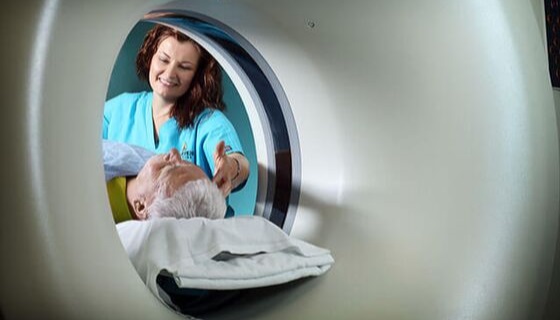Routine Chest CT Exams Can Identify Patients at Risk for Cardiovascular Disease
Posted on 26 Feb 2024
Coronary artery disease (CAD) is the primary cause of death globally. Adults without symptoms but at risk can be screened using EKG-gated coronary artery calcium (CAC) CT scans, which are crucial in assessing risk and aiding in treatment decisions. Incidental CAC (iCAC) can be easily identified on chest CT scans performed for reasons unrelated to heart conditions, yet it's often not reported by radiologists. There is increasing interest in the field of radiology to utilize opportunistic imaging, potentially with the assistance of artificial intelligence (AI), to scan for incidental findings of various diseases in all types of medical images. Now, new research has found that routine chest CT exams can identify patients at risk for cardiovascular disease, presenting an “untapped population health resource” for the specialty.
Scientists at Johns Hopkins University School of Medicine (Baltimore, MD, USA) conducted a literature review to better understand opportunities in incidental heart imaging findings. In over 80 studies, the prevalence of patients with incidental coronary artery calcium varied widely, from 9% to 100%. Despite this, the findings were reported by radiologists in only about 31% to 44% of cases, according to the researchers. The studies also showed that between 18% and 77% of patients with incidental coronary artery calcium were not receiving preventative medications for this issue.

Out of the studies examined, seven assessed the impact of radiologist reporting on treatment according to medical guidelines. Of these, five studies (or 71%) observed an increase in prescriptions for medications following diagnosis. However, only one study confirmed a decrease in cholesterol levels post-diagnosis. The crucial message for physicians is the importance of reporting these findings and collaborating with the care team to address them. Adopting a more consistent approach to managing this issue could significantly enhance cardiovascular care, the researchers suggest.
“Reporting is just the first step in a concerted effort to optimize care for patients with increased risk of [atherosclerotic cardiovascular disease]-related morbidity and mortality,” stated the scientists. “Performance improvement champions are encouraged to develop high reliability systems to ensure downstream care. For patients who present to the emergency department without primary care access, radiologists should partner with emergency medicine physicians to capitalize on the opportunity to inform patients about the new diagnosis of preclinical ASCVD disease and arrange ambulatory care. Partnership with cardiology is equally important, to develop clinically and cost-effective management paradigms that provide guard rails against an increase in low value testing and interventions.”
Related Links:
Johns Hopkins University














